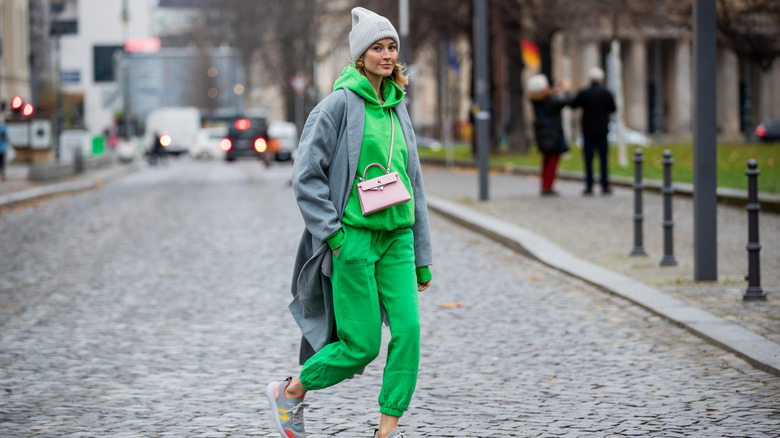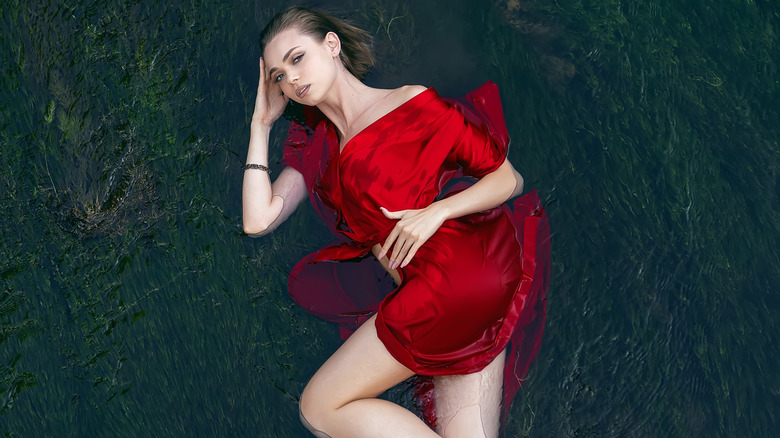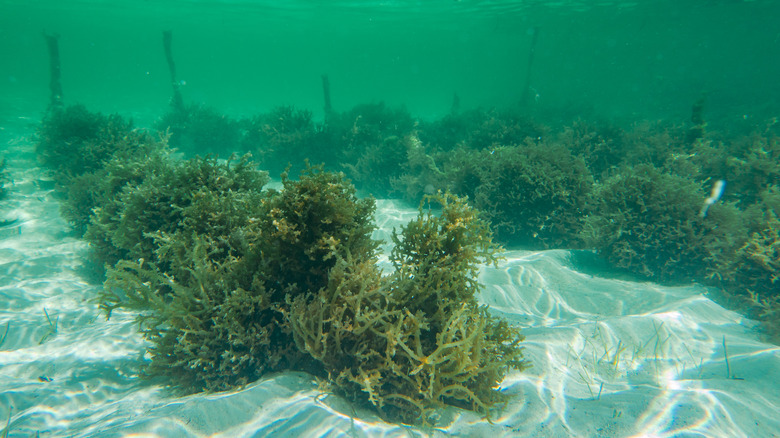Is The Future Of Sustainable Fashion Seaweed? We're Diving Into The Claims
The unsustainable way most clothing and fabrics are created causes tremendous waste, polluting our environment and directly contributing to climate change. As different segments of the fashion industry either ignore or grapple with their responsibility, seaweed is quietly emerging as a sustainable but not-quite-ready-for-primetime superstar.
In 2018, research from the management consulting firm McKinsey shows that the fashion industry was responsible for 4% of worldwide global emissions from 2.1 billion metric tons of greenhouse gases. And it's hard for individuals and businesses to do the right thing. For instance, while there are a few places to recycle clothing, they're rare. A UN Environment Programme partner estimates that "a truckload of abandoned textiles is dumped in landfill or incinerated every second." Unfortunately, fossil fuels become plastic which in turn becomes synthetic fabrics; they comprise 60% of all textiles. Whether they end up in landfill or the ocean, plastic microbeads now inhabit our earth and seas. To keep unwanted clothes out of landfills and be part of the solution, consider a sustainable approach to purging your wardrobe.
The good news is that a combination of visionary fashion companies, designers, and serious investors are collaborating to create new solutions. They're harvesting seaweed, using it to manufacture clothing and non-toxic dyes, experimenting with existing manufacturing methods to improve efficiency, and receiving significant funding to continue innovating.
What are some seaweed-related innovations?
Charlie Strand, a student of sustainable fashion for a quarter of a century, has worked with Dior and other brands. He founded Seaweedworks, an artist's collective that studies and utilizes seaweed, lighting the way for others to share ideas rather than compete. One of Seaweedworks' designers, Tanguy Mélinand, showed what's possible by winning the Yinger Prize's Gold award for sustainable design in 2022 with his seaweed "leather" jacket.
Fashion company and mad scientist's fabric lab Pangaia is making seaweed and microalgae into different fibers and wicking treatments and then blending 60% seaweed with 40% organic cotton into t-shirts. The plan for their next version is to be 80/20; they've already tested loungewear made with 100% seaweed.
You may not have thought about where the color of your clothing comes from. The ink used in black clothing comes from a process involving fossil fuels. It creates a toxic pigment called Carbon Black which pollutes the water. A company named Algaeing, which is a collaboration between a fashion industry ex-pat and her biofuels engineer dad, has invented algae-based inks and dyes. They can't keep what they've got on the shelves and have developed a waiting list.
What are the pros and cons of seaweed fashion?
The pros of using seaweed are considerable. Algaeing founder Renana Krebs told Bloomberg, "It takes about 180 days to grow cotton; algae takes only three weeks." It also grows abundantly in the sea. It can also be harvested in a solar-powered agricultural system, which uses no pesticides and significantly less water compared to growing cotton. When not blended with other fabrics, seaweed is 100% biodegradable.
Seaweed fashion innovations are attracting investors. A British sustainable fashion startup called Vollebak creates algae-dyed hemp clothing as well as compostable shirts made from algae and wood pulp. Vollebak's investors include Joe Gebbia, who co-founded Airbnb, and Headspace Health CFO Sean Brecker. Algaeing is seeking $15 million to help them scale up and has already raised $5 million.
There are logistical roadblocks to creating seaweed-based clothing for the masses. The textile industry recognizes that there must be a demand first in order to produce huge quantities. Eco World Online says, "Large-scale production of fabric made with seaweed is not available, making it a scarce fabric. That means it is quite expensive and has a long lead time, but it is suitable for use by slow fashion brands." A simple Pangaia t-shirt is expensive at $60. However, Pangaia's approach is to appeal to young celebrities with a luxury brand that will hopefully increase demand among fans. We admire several celebrities who've become sustainable fashion icons for using their fame for the good of the Earth.


